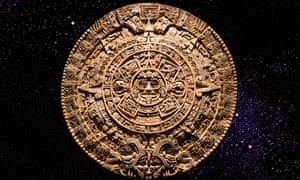The night was almost over. Ayodhya was still numb with sleep. Piercing through the quiet, a young sadhu, drenched in sweat, came scampering from Hanumangarhi, a fortress-like Hindu religious establishment housing over five hundred sadhus in Ayodhya. He had been sent to summon Satyendra Das to his guru, Abhiram Das, who seemed to be breathing his last. Those were the early hours of 3 December 1981, and a curtain was coming down over a few forgotten pages of history.
Dharam Das, the other disciple who stayed with Abhiram Das in his one-room tenement, the asan in Hanumangarhi, had asked for him so that they could be with their guru in his last moments. The news did not come as a shock. Satyendra Das had been almost awaiting the moment, since he had known for long that his guru was nearing the end of his journey. He had been at his bedside the whole day and the signs were not encouraging. Even when he had left Abhiram Das’s asan to get a breather after hours of tending to the terminally ill, he had a premonition that his guru – the man who had led a small band of Hindus to surreptitiously plant the idol of Lord Rama in Babri Masjid on yet another December night three decades ago – might not live long. After he had come away from the bedside, unwilling but tired to the bones, Satyendra Das was restless and unable to sleep. He dreaded the moment, yet knew that someone would knock on his doors with the news any time, and when it came, he responded fast, wrapped a quilt around himself and ran out along with the young sadhu who had come to fetch him.
It was very cold outside. The winter night was fading into a dense fog that smothered everything in its folds. Nothing was visible. The duo, almost running in total invisibility, knew the nooks and crannies of Ayodhya like the back of their hands. As Satyendra Das arrived at the asan, he saw Abhiram Das lying in the middle of the room on a charpoy, surrounded by a few sadhus from Hanumangarhi. No one spoke; it was very quiet. Only Dharam Das moved close to him and murmured softly that their guru had passed away minutes before he had stepped in. Slowly, as the day began to break, devotees and disciples started pouring into the room. Soon, preparations for the last rites of the deceased were begun with the help of some residents of Hanumangarhi.
The rituals for the final journey of ascetics are not the same as those for non-ascetic Hindu grihasthas, particularly in north India. Sadhus, unlike Hindu grihasthas, are rarely cremated. There are two options: either their bodies are smeared with salt and buried sitting in a meditative posture or they are dropped down a sacred river tied with a rock or sacks full of sand. The fact that sadhus who take vows of complete renunciation are not cremated symbolizes their separation from the material world. The claim goes that cremation for sadhus is superfluous since they have already burnt their attachments through ascetic initiation, opting for a life of austerities and renunciation.
In Ayodhya, the normal ascetic practice has been to immerse the body of a sadhu in the Sarayu – the name given to the river only as long as it touches the shores of the town. Before and after Ayodhya, the river is known as the Ghaghara. The reason for this nomenclatural confusion lies in a particular Hindu belief. As mythology has turned Ayodhya into the birthplace of Lord Rama, the river owing by it has also assumed the mythical name of Sarayu – the stream that is believed to have owed through the kingdom of Lord Rama.
Back in Hanumangarhi, by the noon of 3 December 1981, Abhiram Das’s disciples and friends had completed all preparations and were ready to initiate the final rituals for the deceased. Outside the asan, the body of Abhiram Das had been placed on a platform made of bamboo in a seated posture, his face frozen into a mask of self-control, his eyes half-closed as if he were deep in meditation. A saffron piece of cloth that had the name of Lord Rama printed all over – a particular kind of cotton or silk material called ramnami – had been carefully wrapped around his body. A similar cloth covered three sides of the arch made out of split bamboo that rested on the hard bamboo platform holding the corpse. The bamboo structure – euphemistically called viman to symbolize the mythical transporter of souls to the heavenly realm – had been kept uncovered on one side to enable people to have a last glimpse of the deceased.
Slowly, a group of sadhus lifted the viman on their shoulders and climbed up the flight of stairs leading to the temple of Lord Hanuman in the centre of Hanumangarhi. At the temple, the group swelled further and as the viman was taken out of Hanumangarhi, the motley crowd accompanying it chanted, ‘Ramajanmabhoomi Uddharak amar rahen (Long live the saviour of the birth place of Rama).’
Three decades back, on the morning of 23 December 1949, the First Information Report (FIR) registered by Ayodhya Police following the planting of the idol of Lord Rama in Babri Masjid on the night before had named Abhiram Das as the prime accused. He had also been tried for the crime he and his friends had committed that night, but the case had remained inconclusive. In course of time, many Hindus in Ayodhya had started calling him Ramajanmabhoomi Uddharak.

Krishna Jha and Dhirendra K. Jha, Ayodhya – The Dark Night, Harper Collins
The slogan-shouting grew louder as the viman reached the entrance of Babri Masjid, where it was carefully laid down. The priests of Ramajanmabhoomi, the temple that operated inside Babri Masjid ever since the idol was planted in it, as well as those of nearby Hindu religious establishments already knew about the demise of the sadhu, and they came out and garlanded the corpse and paid their homage to the departed soul.
By and large, however, Ayodhya remained unaware of Abhiram Das’s death. Though some residents looked at this funeral procession with curiosity, for the majority it was the demise of yet another old sadhu. After three decades, the historical facts associated with the developments in 1949 had slipped into obscurity. e propaganda of All India Hindu Mahasabha and Rashtriya Swayamsevak Sangh (RSS) – that the idol had never been planted and Lord Rama had manifested Himself at His place of birth – had gained ground among devout Hindus by now, largely delinking Abhiram Das from what he had done in the dark hours of that fateful night. Booklets and pamphlets written by Hindu communalists during the intervening period had flooded the shops of Ayodhya and had gone a long way in reinforcing the myth of ‘divine exercise’. For legal reasons, even those who had a role in that surreptitious act found it convenient to let the myth grow and capture popular imagination. e law, after all, could catch human conspiracies, but a ‘divine exercise’ was beyond its reach. Yet, to a small group of Hindus in Ayodhya, Abhiram Das continued to remain till his death Ramajanmabhoomi Uddharak or simply Uddharak Baba.
Whatever be the case, the lack of interest among locals could not be missed by many present in the cortège as it wound down the narrow lanes of Ayodhya and moved towards the banks of the Sarayu. On the bank, where the cortège reached at around two that afternoon, those carrying the viman on their shoulders bent down to put their burden on the ground. The sadhu’s body was taken out of it, bathed in the river and, after being smeared with ghee all over, was wrapped in a fresh white cloth. Two sand-filled sacks were tied to the back of the body, one beneath the shoulder and the other under the waist, which was then gently laid out in the boat that sailed o the moment Satyendra Das, Dharam Das and three other sadhus of Hanumangarhi boarded it. Within minutes, the boat reached the centre of the river, where it was no longer shallow and which had traditionally been used for such water burials. Those present on the boat performed the final rites before lifting Abhiram Das’s body and casting it into the cool, calm waters of the Sarayu.
II
The indifferent response that Abhiram Das’s death evoked among the local populace in 1981 was at odds with the atmosphere the town had witnessed three decades ago, during the years following Independence. At that time, many in Ayodhya, as in several other parts of the country, had seen things differently. The communal frenzy which had accompanied the partition of India had intensely brutalized the atmosphere. No less important was the role played by organizations which saw the immediate aftermath of Partition as an opportunity to derail the secular project of independent India. e conspirators associated with these organizations and the conspiracies they hatched had already resulted in major national tragedies.
One such was the gruesome murder of Mahatma Gandhi on 30 January 1948. The hands that pumped bullets into the chest of the Mahatma were that of Nathuram Godse, but, as was proved later, the assassination was part of a conspiracy hatched by top Hindu Mahasabha leaders, led by V.D. Savarkar, whose prime objectives were to snatch political initiative from the Congress and destabilize all efforts to uphold secularism in India. The conspiracy to kill Gandhi could not remain hidden for long even though the trial, held immediately after the assassination, had failed to uncover its extent.
The surreptitious occupation of the Babri Masjid was an act planned by almost the same set of people about two years later – on the night of 22 December 1949. It was, in many ways, a reflection of the same brutalized atmosphere that saw Gandhi being murdered. Neither the conspirators nor their underlying objectives were different. In both instances, the conspirators belonged to the Hindu Mahasabha leadership – some of the prime movers of the planting of the idol had been the prime accused in the Gandhi murder case – and their objective this time too was to wrest the political centre stage from the Congress by provoking large-scale Hindu mobilization in the name of Lord Rama.
Yet the two incidents differed – as much in the modus operandi used by Hindu communalists as in the manner in which the government and the ruling party, the Congress, responded to them. While the Mahatma was killed in full public view in broad daylight, the Babri Masjid was converted into a temple secretly, in the dead of night. Apparently, the quick and massive government reprisal in the aftermath of Gandhi’s assassination had taught the Hindu Mahasabha leaders several lessons. One was to avoid confrontation with the government so that they could extract maximum political advantage out of their act. Another was to involve a section of the Congress that was sympathetic to their cause. So when, two years later, they set out to execute the Ayodhya project, they remained extremely careful, keeping themselves in the backstage until the mosque was actually impounded and ensuring a large-scale mobilization of Hindus in the immediate aftermath without wasting any time. Though the political objective they had planned through this act of communal aggression in Ayodhya could not be achieved in the manner they had hoped for, they greatly succeeded in keeping the story of the night and the conspiracy behind it a secret, for it never came out in its entirety.
Also, while the conspiracy to kill the Mahatma was probed thoroughly by a commission set up by the Government of India albeit two decades later, no such inquiry was conducted to unmask the plot and the plotters behind the forcible conversion of the Babri Masjid into a temple. As a result, an event that so remarkably changed the political discourse in India continues to be treated as a localized crime committed spontaneously by a handful of local people led, of course, by Abhiram Das, a local sadhu. It was, however, a well-planned conspiracy involving national-, provincial- and local-level leaders of the Hindu Mahasabha undertaken with he objective of reviving the party’s political fortunes that were lost in the aftermath of the Gandhi assassination.
Time has further pushed the secret story of the Hindu Mahasabha’s Ayodhya strategy into obscurity, leaving only what is most apparent for public debate. The unending process of litigation which it triggered completely shifted the focus away from that fateful night and has now become the basis of communal politics in the country. Incidentally, the most crucial part of the controversy – the hidden one – remains an ignored area of research. For instance, the White Paper on the Babri Masjid–Ramajanmabhoomi dispute of the Government of India dismissed the incident of 1949 – legally the root cause of the dispute – in just one paragraph. Issued in the aftermath of the demolition of the mosque on 6 December 1992, the document does not have more to say on the incident:
The controversy entered a new phase with the placing of idols in the disputed structure in December 1949. The premises were attached under Section 145 of the Code of Criminal Procedure. Civil suits were led shortly thereafter. Interim orders in these civil suits restrained the parties from removing the idols or interfering with their worship. In effect, therefore, from December 1949 till December 6, 1992 the structure had not been used as a mosque.
It seems impertinent to say that so little is known about the night of 22–23 December 1949 since, in a sense, almost the entire dispute over the mosque emanates from the appearance of the idol of Rama inside that structure. Nevertheless, it is true that there has been little research by contemporary or later writers to fill the gap. This missing link of history remained out of focus till the issue was politically revived and strengthened by the Vishwa Hindu Parishad (VHP) in the mid-1980s. And by then the story of the night had been taken over by the politics of communalism and the debate over the proprietorship of the disputed land.
But till Lord Rama ‘manifested’ Himself inside the Babri Masjid, all moves had sought to construct the temple at Ramachabutara, an elevated platform outside the inner courtyard of the mosque. Only after the idols were placed inside did the demand for converting the Muslim place of worship into a temple enter the legal arena. And yet the development of that night did not attract much attention in the media when it actually took place. No major newspaper or journal of the time gave it the kind of serious coverage it deserved even though the import of the development was not at all lost on Congress leaders like Jawaharlal Nehru, Sardar Vallabhbhai Patel, Govind Ballabh Pant and Akshay Brahmachary as well as Hindu Mahasabha president N.B. Khare, its vice-president V.G. Deshpande and its all India general secretary and president of the party’s UP unit Mahant Digvijai Nath.
The only journal that covered the events in detail was a local Hindi weekly in Ayodhya called Virakta. Its editor, Ramgopal Pandey ‘Sharad’, was a known Mahasabhaite. The kind of material that Virakta published had a pronounced Hindu communal bias, and it was hardly expected to carry objective reportage on the developments. If anything, this journal was the first to promote the theory of ‘divine exercise’ – though in bits and pieces – to explain the appearance of the idol of Lord Rama inside the mosque.
Later, Ramgopal Pandey ‘Sharad’ wrote a booklet in Hindi – Shree Ramjanmabhoomi Ka Rakta Ranjit Itihaas (The Blood-soaked History of the Birth Place of Lord Rama). In Ayodhya, this has remained the most popular and perhaps only available material on the subject ever since. Like Virakta, this booklet, too, explains the developments of that night in terms of divine intervention rather than as a communal tactic conceived and executed by the Mahasabha in collaboration with local communalists. is is what the booklet says:
Twenty-third December 1949 was a glorious day for India. On that day, after a long gap of about four hundred years, the birth place of Lord Rama was redeemed. e way developments happened [on the night before], it can be said that Lord Rama himself redeemed his place of birth.
While this theory was being used by communalists to explain the mystery of those dark hours, no serious attempt was made to explore the events of that night objectively, neither by the government nor by any institutions or individual researchers. Debunking the theory of ‘divine exercise’ is one thing (and there is no dearth of works in this regard), but unravelling the truth that was sought to be covered is something else.
Surely, part of the reason why the facts could not come out as and when they occurred – as happened in case of Mahatma Gandhi’s assassination – had greatly to do with the power politics of the time. After the assassination of Gandhi in 1948 until the death of Sardar Vallabhbhai Patel in 1950, the Congress party was beset with an intense intra-party power struggle. Though it had witnessed factional fights earlier as well, there had always been an element of restraint under the influence of Mahatma Gandhi and the idealism of the freedom struggle. But as soon as these restraints disappeared, the fight between the two power blocs in the Congress – Hindu conservatives led by Patel and secularists led by Nehru – came out in the open.
The United Provinces, in particular, emerged as one of the main battlegrounds for these power blocs in the Congress, merely months after Gandhi’s assassination. Govind Ballabh Pant, the chief minister of the province (called prime minister before adoption of the Constitution on 26 January 1950), was a staunch loyalist of Patel. His desperation to remove all those who appeared to be potential challengers to his authority in the state Congress led him to align with Hindu revivalists in Ayodhya – a move that, apart from paying him dividends, greatly emboldened Mahasabhaites and set the ground for the eventual appearance of the idols at the Babri Masjid.
With the Hindu conservative faction of the Congress, in a bid to neutralize Nehru, openly trying to outsource political strength from communal elements outside the party, and the latter endeavouring to arrest this political drift and salvage its own position, there was hardly much time, or determination, to probe the misdeeds of the Mahasabhaites. This was even more so in the United Provinces where the government appeared to be more interested in protecting the Hindu communalists than bringing them to book.
By the time this battle was won by Nehru in late 1950, the incidents of the night of 22 December 1949 had got lost in legal thickets, and the mood of the nation had changed, with the secular fabric seemingly no longer threatened by Hindu revivalists. As the focus shifted following the promulgation of the Constitution of India on 26 January 1950, almost all the players of the Hindu Mahasabha’s Ayodhya strategy either lost their relevance or, in cases where some of them managed to remain in currency, their ability to break the secular equilibrium got severely restricted and their link with the night became part of this missing link of modern India’s history.






